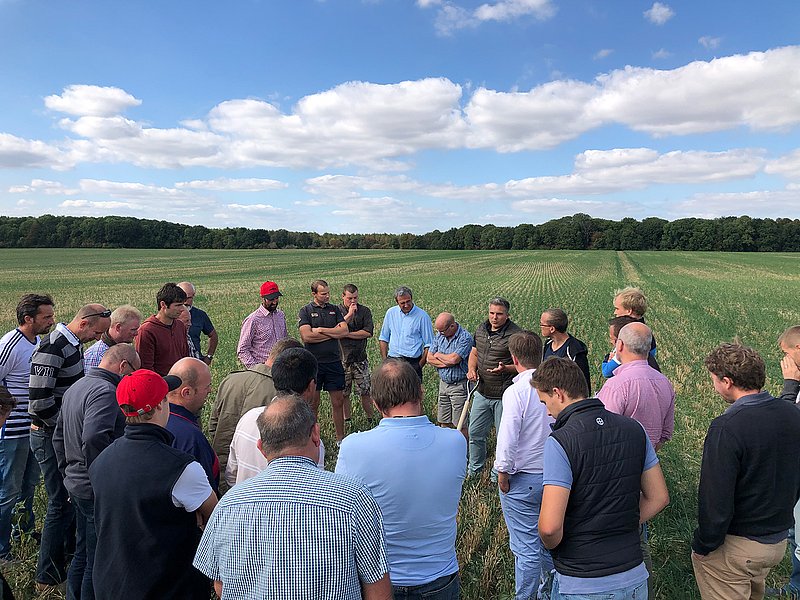
HORSCH Academy: Training and network
Technology and agricultural methods develop more and more rapidly. With its innovative machines HORSCH takes an active part in this development to meet the new requirements of the farmers. However, it gets more and more difficult to keep pace with it.
With technology alone it will not always be possible to sufficiently respond to all these demands. The agronomic solutions for the requirements of society and politicians call for more and more documentation and high-tech. And you also need more and more specific knowledge to operate the agricultural machines. Thus, it is indispensable to accompany the farmers with trainings and professional exchange.
This is the reason why in September 2018 HORSCH France set up the HORSCH Academy. This new training concept is only available to HORSCH customers. They meet at an agricultural farm for trainings and field trips and exchange experiences with the present experts about a certain topic. This year four field days and two excursions took place all over France.
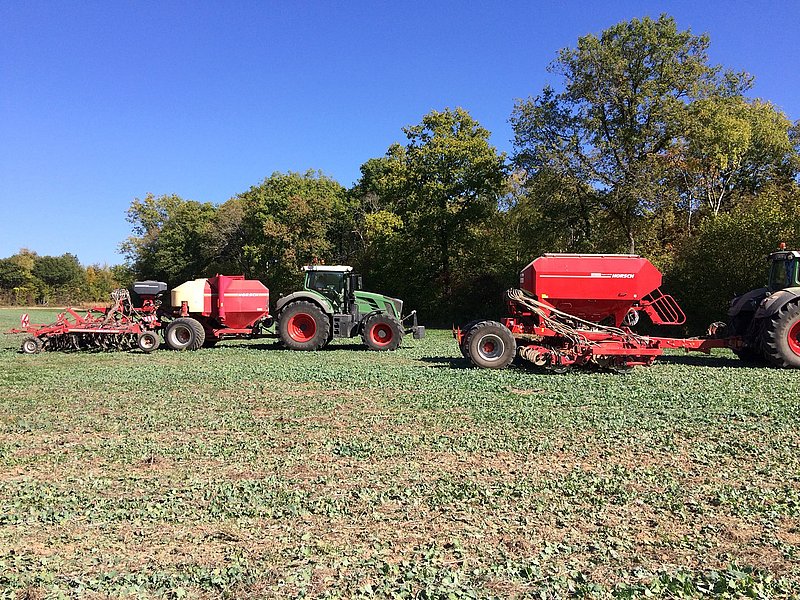
“The topic of the first sessions of the HORSCH Academy was conservation farming“, Rémi Bohy, HORSCH France‘s specialist for sowing and Precision Farming, explains. Mineralisation of organic matter, soil erosion, weed resistances: today farmers have to face new phenomena and have to rethink their cultivation systems. “Conservation farming is one way to approach these challenges. Rethink rotation, cultivate catch crops and disturb the soil as little as possible – this is how some of our customers really solved for example the problem of resistances”, Rémi Bohy specifies. The agronomic interaction of these different methods will allow for keeping pace with the changes in the agricultural sector in France – in economic as well as environmental terms. Moreover, conservation farming requires an enormous know-how. Thus, the choice of topic was obvious.
Fighting the global warming
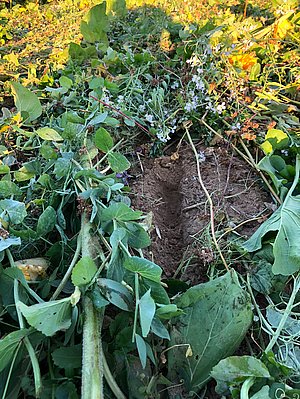
terraHORSCH visited the first event that took place in in Arronville (department Val d’Oise), 50 km north-each of Paris at the beginning of June 2019. About 40 farmers had come to the Saint-Lubin farm. Frédéric Rémy manages the 450-hectare farm that by now has been converted completely to conservation farming.
The day started with speeches of Fréderic Rémy and Julien Senez, a farmer from Vignemont (department Oise) and founder of Kiwi Agronomy, a training centre for conservation farming: “The number of French farms that have been converted to conservation farming is estimated to be 4 %”, Julien Senez explains. “Some of them can rely on 15 to 20 years of experience.“
For Julien Senez the most important objective of the conversion to conservation farming is to contribute to the fight against global warming. The associated methods really allow for storing larger amounts of carbon in the soil: the carbon balance of a converted farm is positive. Generally, cultivated soils release 300 kg carbon per ha. Only little cultivated soil with catch crops, however, can store up to 600 kg carbon per ha per year. And via government aid programs as they already exist in Switzerland such ecosystem services might soon be reimbursed.
The second objective is to become competitive again by reducing the production costs per ton of wheat. This can be achieved by reducing the agricultural inputs and particularly the fuel savings that result from a sophisticated tillage. “In France, the production costs for a ton of common wheat on average amount to 155 €. With the cheapest methods it is produced for 175 €! In Russia the average costs amount to 100 €… This is why we have to develop our methods further “, Julien Senez emphasises.
Challenges
Despite the obvious advantages the conversion to conservation farming is not easy at all. There are numerous obstacles, but also possibilities to avoid some of them. First of all, you have to master the climate conditions of the soil. “Via mineralisation tillage allows for concealing the disfunctions of the soil. As soon as you convert to minimum tillage or no-till farming, these disfunction are revealed”, Julien Senez explains. It is essential to classify the fields, even individual lots within one field, into three categories: type of soil, share of organic matter and pH value. In some cases (e.g. an increased share of organic matter and a neutral pH value) the conversion to conservation farming will proceed easily. In other cases, increased care will be required, whereas on suboptimal lots preparatory work will be inevitable. Liming can solve the pH problem. Including catch crops in the rotation and adding organic matter can take the amount of organic matter in the soil to an adequate level again. “A targeted placement of fertiliser can compensate a poor mineralisation“, Julien Senez adds.
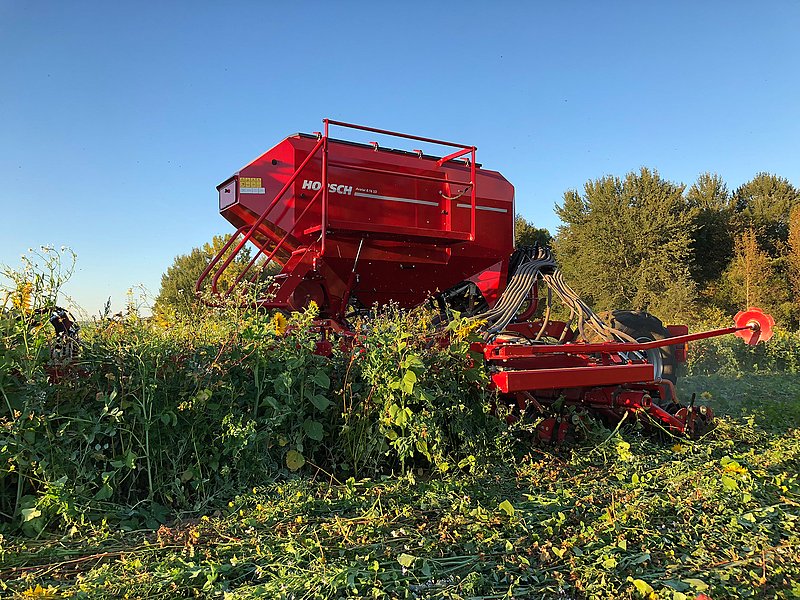
Frédéric Rémy then presented the Saint-Lubin farm and the gradual conversion to conservation farming. With 750 mm rainfall per year and the constantly increasing drought risk it became necessary to keep as much humidity in the soil as possible to guarantee a successful sowing in summer. Frédéric Rémy needed a seed drill that penetrated the soil in an optimum way. He chose a HORSCH Avatar 6.16 SD. Moreover, he very carefully selected catch crops that would perfectly fit into his rotation. “A versatile rotation and sowing without disturbing the soil – that’s the key when you want to fight weeds“, Frédéric Rémy summarises.
Catch crops
His rotation is as follows: winter rape/common wheat/spring flax or sunflowers/common wheat/spring field beans or winter peas followed by buckwheat/common wheat. It always includes a mixture of different catch crops that is adapted to the following crop. The mixture consists of at least four different varieties, among them at least 50 % legumes. The mixture also has to be matched with regard to the root development.
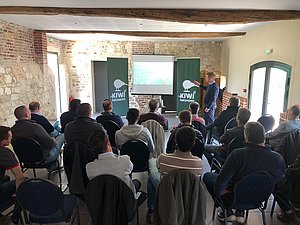
“If the catch crop develops well, you do not need any chemical measures. Glyphosate is solely used to get a grip on weeds and perennials.” The possible ban on glyphosate would turn his current production method completely upside down, however positive the intention behind it may be. By the way, Frédéric Rémy only uses 1.5 litre of glyphosate per hectare. It would be a step backwards to re-introduce tillage on the farm. “I am not sure if the politicians understand the problems correctly. You cannot demand from the farmers to make an effort to reduce greenhouse gas emissions and at the same time deprive them of the main tool that would allow them to achieve this objective”, he states.
After eight years, the balance of the conversion of Saint-Lubin farm to conservation farming is excellent. Frédéric Rémy estimates that he spends 455 h per year less on the tractor – this corresponds to a diesel saving of 21,200 litre. This amounts to 13,650 € per year and this, in turn, means up to 30 € per hectare. At the same time, the yields for common wheat have increased by 14 dt and for rape by 7 dt per hectare.
In the field
After lunch, the group went out into the field to see the results of Frédéric Rémy’s agronomic methods on site. The exchange between the farmers and the two experts was quite lively. Frédéric Rémy then showed the participants round his machine park. He particularly pointed out his two seed drills – one with discs, the other one with tines. Mainly in summer, he uses a HORSCH Airseeder 6 CO in stubbles. The tines guarantee an excellent seed-soil contact even if there are high amounts of straw and allow for a satisfactory emergence of catch crops without cultivating the soil. In autumn, he uses the HORSCH Avatar 6.16 SD. Due to the single disc seeding element he can go through large catch crops without causing any clogging and only little soil is moved. Thus, the emergence of weeds in autumn is reduced.
This first event was the successful start of the HORSCH Academy. The new concept allows for intensifying the already close contact between manufacturer and customer even further. The customers want to become better and better and they want a platform for an exchange about innovative methods. In fact, the agronomic methods develop faster and faster, as well as the technology level of the machines that are to realise these methods. The training and exchange days do not only provide the farmers with new insights, but also allow for networking with their professional colleagues. The combination of speeches, a practical part in the field and an exchange of experiences has impressively proven its worth and will be continued next year.